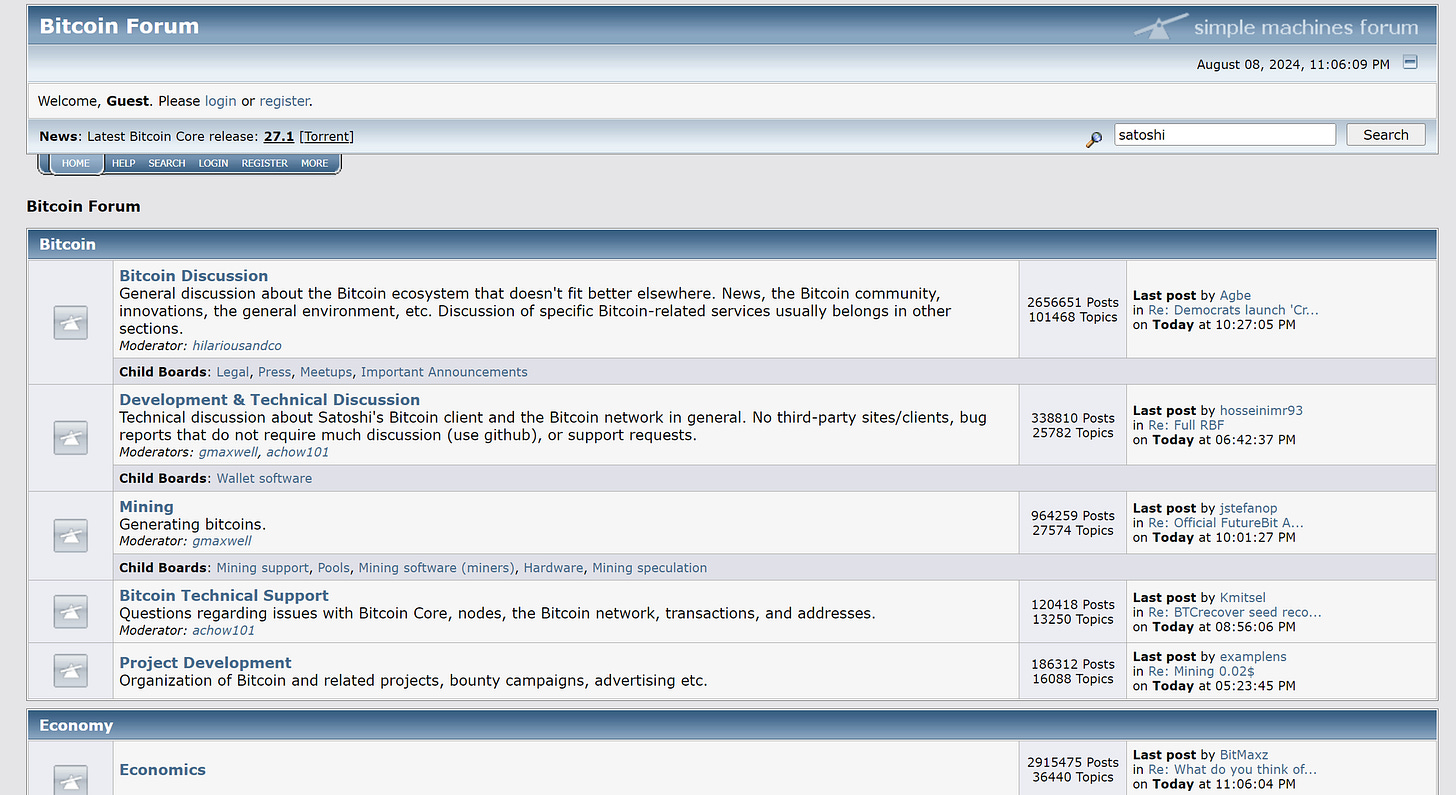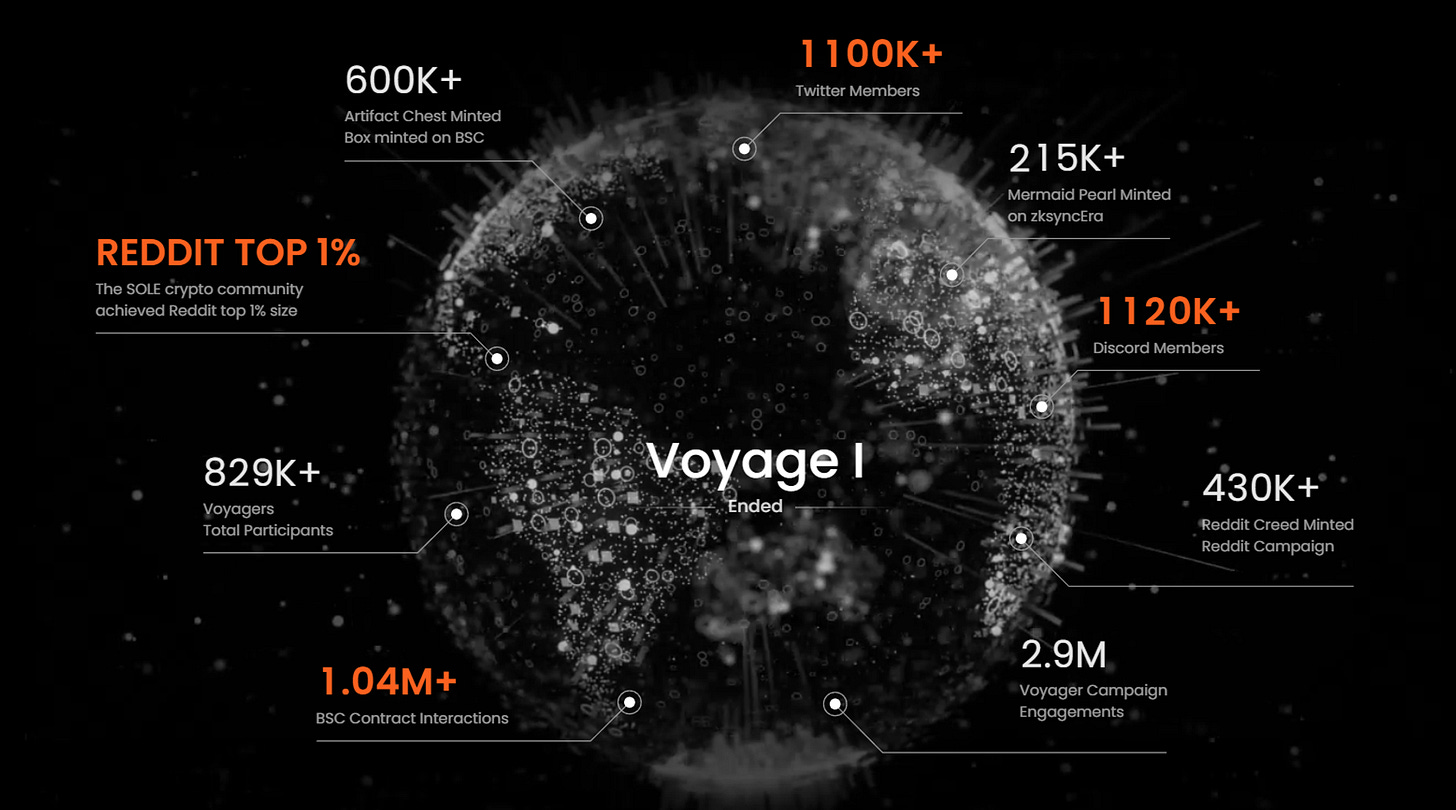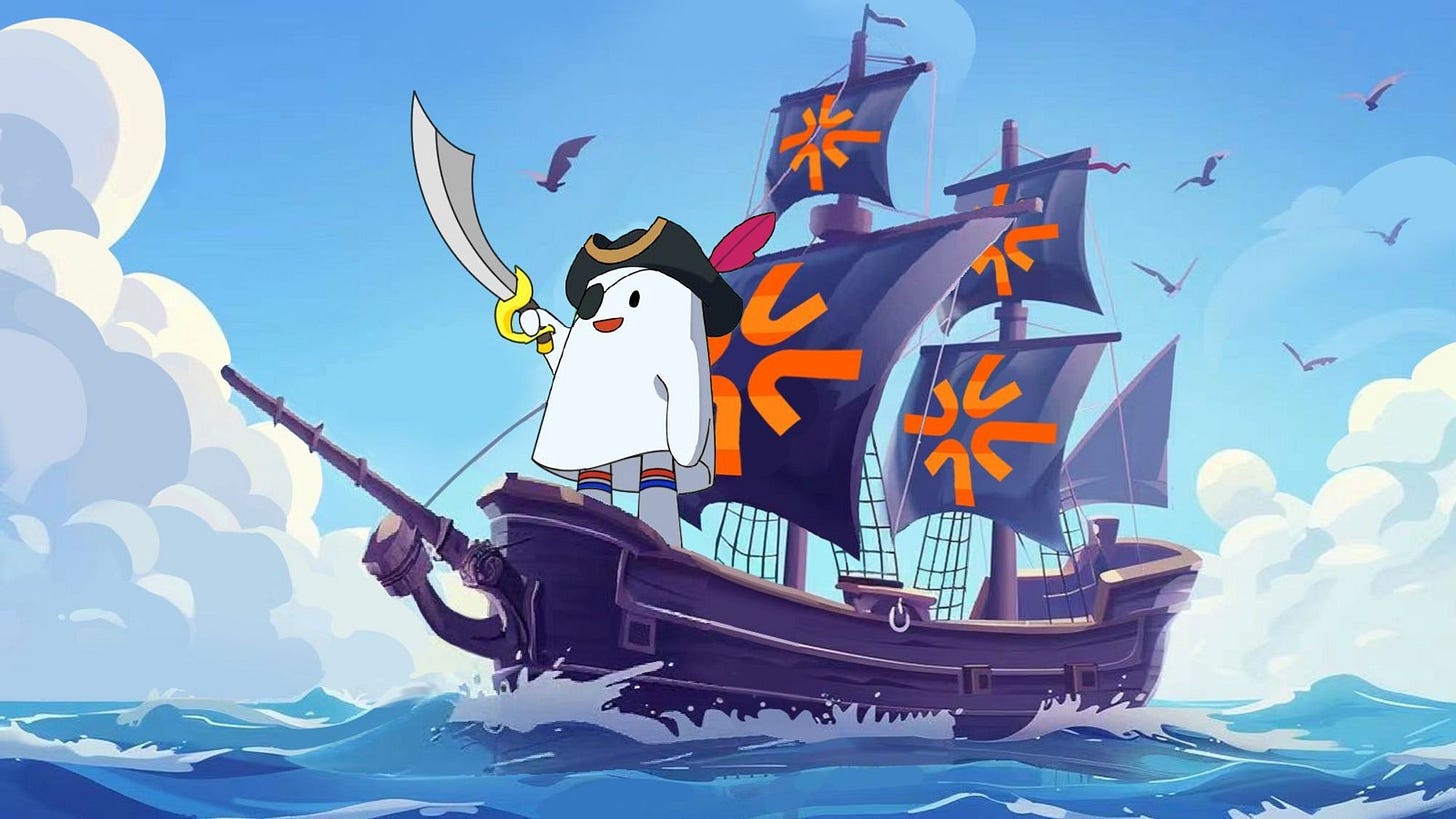Tabi - The Path to Network Unity
If you ask an AI in 2024 what omnichain technology is for web3, you will receive the following message:
A technological concept aimed at creating interaction between various blockchain networks for the purpose of further cooperation and benefiting from the exchange of information on both sides.
All further aspects mentioned by AI will also be focused on explaining the relationship between networks, the absence of any centralized intermediaries, etc. What's wrong with this conclusion?
Not a single existing blockchain, protocol, or application can "mutually cooperate" without the most important component of a decentralized network - the community.
Omnis (Latin) - each
If we break down the concept of uniting the entire Web3 into a single decentralized community, the following problems are immediately apparent, at least in 2024:
The race between key mastodons for audience interest and superiority over technologies has led to a multi-tiered hierarchy between blockchain layers - L0, L1, L2, L3 networks, where 80% of the differences lie in design and development teams.
While Wall Street is seeing a general consolidation over the newly formed ETF, each new project freezes a layer of the real audience that is unable to absorb Web3 in its entirety.
The cryptocurrency sector, which is so eager to become a new twist in the economy, politics, and other vital sectors of civilization, depends primarily on ordinary users.
More and more impact in the field is brought by builders-build-for-builders, but not for the average user, who may have just entered the world of BTC, altcoins, etc. All technologies are focused not on the sphere as a whole, but on the direct function of the network.
Omnichain is something everyone wants. Initially, the tone set by Satoshi Nakamoto was not about the prospects of the sphere's fragmentation, but about its unification. Just remember the BTC forums.
The direct concept of uniting blockchains has not been achieved, because instead of scaling consumer capabilities, the trend has been to scale developers' tools and their separate ecosystem sandboxes.
Everything said above is not an obituary for the sphere's ability to grow the percentage of user adoption. The ace up omnichain's sleeve could be one of the most underutilized sectors - GameFi.
What happens if you combine native game development infrastructure, the concept of "Community is the main utility", and a modular network on the Cosmos SDK?
The result is a blockchain that creates complete freedom for projects and users - Tabichain.
In today's article, we'd like to discuss the unexpected pivot from an ordinary NFT marketplace into a blockchain that changes web3 before our eyes.
Introduction
Tabi - The Path to Network Unity
Essence of Work and Infrastructure
Game Theory - The Value of Nodes for Tabi Community
Looking into the Future
Conclusion
Tabichain - The Path to Unity
The sleeping Asian market is gradually appearing on the radar of the rest of web3. They are already working not only on aggregating all the experience but also filling niches that we may not have noticed before.
Previously, analysis of their industry showed uncertainty, but now many are gradually pointing the development vector in their direction.
A gigantic market, the largest crypto conferences, a growing and transparent ecosystem of investments, building, and launching in at least two points of South Asia - Singapore and Hong Kong
The emergence of projects that modify the entire market environment.
We cannot say for sure whether the period from 2021 to 2023 was overly successful for the product from the company - Treasureland Market.
Under the hood of the NFT mania in the summer of 2021, a huge list of NFT marketplaces, including today's topic of discussion, was merely the result of a spontaneous wave that gave rise to dozens/hundreds of wealthy people.
A mass-market product that combines 3 mechanisms - buy/sell/list for sale - could not compete with others of the same kind.
This factor gave the sphere the first twists in the evolution of Web2 and Web3 connections - the conversion of human traffic between networks began.
For Treasureland, this path began with the integration of Reddit into its incentives. The initiative led to the development of retro hunting, especially during the peak of the Reddit trend for NFT avatars.
But the idea of organically attracting an audience from completely different sources originated here. Thanks to the introduction of the Tabi community, the project achieved its first significant figures in promotion.
In the introduction to this article, we mentioned one important detail: what is currently being done under the banner of "omnichain infrastructure" is, in fact, the result of builders creating for other builders.
What this means:
The infrastructure of omnichain liquidity, pools, swaps, trading, and exchange operations is undoubtedly a crucial link between not only Bitcoin and Ethereum networks but also other blockchain structures.
But if a product is built to transfer or freeze assets within itself, it's natural to ask the question: "Who will be the audience that uses this service?"
Everyone remembers LayerZero, Zetachain, Polkadot, etc.
Whatever percentage of utility each new omni-mechanism brings to the sphere, the absolute percentage of users at the moment will only use it momentarily.
Unfortunately, this is how the GTM strategy has been structured for the past few years. But it's not as bad as it seems.
The current Tabi is a modular L1 network where the execution layer is omnichain. This means that with its own blockchain "base," Tabi's scaling can be extended to absolutely any network.
The essence lies in development with a focus on the GameFi sector and the involvement of the Web2 audience of gamers and game developers.
How can one network solve two pressing tasks at once: engagement and unification?
Essence of Work and Infrastructure
Tabi's execution environment allows not only integrating its use on any blockchain but also adapting its behavior to any programming language or framework, up to the Web2 basis.
At the core of the layer lies the function of polymorphism, which forms the basis of their virtual machine (Polymorphism VM)
The goal of the polymorphic virtual machine is to create a certain superstructure over any network chosen by the operator and to adopt its state to create the necessary infrastructure.
A similar construct has been successfully operating in Cosmos for several years, which, thanks to Ethermint technology, is an EVM-composite network.
In general, any polymorphism has a simple example - the virtual machine launch service on a PC with Windows OS.
Any user who wants to recreate a Linux image over their native system can choose technical specifications, gain access to the virtual drive of this machine (based on a part of the physical drive), and so on.
Polymorphism of Tabichain VM works similarly.
Instead of creating a dApp or other service, a virtual machine is created in symbiosis with the final deployment network. Tabi nodes control the stability and efficiency of operational activities.
Along with the execution environment, additional security interfaces and other virtual infrastructure, such as EigenLayer, are connected if necessary.
Does this mean, for example, that Tabi can work with Bitcoin L2 with an EVM level of security? Yes.
Unlike the canonical structure of monoliths like Ethereum, which do not fit the multi-stage logic of current games, Tabichain can be considered a potential "bridgehead" for a new generation of game developers coming from outside web3.
However, reorienting a Web2 developer towards blockchain technologies is not advantageous in terms of time consumption or the obscurity level of development future.
Traditional servers in the gaming industry fundamentally differ from the logic of blockchain virtual machines.
Smart contract limitations do not allow deployment of the necessary logic for specific gaming purposes.
GameFi in 2024 is a linear speculative format, locally separated by the framework of each new network.
GameFi in *2030 is the possibility of multichain, decentralized management, and integration of complex economic and gaming mechanics.
The difference is strongly felt, especially for someone who is themselves a gamer/developer with enthusiasm for blockchain.
To demonstrate Tabi's capabilities, a number of gaming projects have already been launched on the testnet. However, it is worth highlighting the following point mentioned in their blog:
Mundus Engine - an engine for game development based on Unity3D, which is a complete Web3 analogy of existing Unity/Roblox engines.
This point directly refers us to Tabi's future mobile expansion, given the popularity and convenience of this language for these devices.
This is also hinted at by Tabi's integration into TON in the form of a store for all existing (legitimate) MiniApps in the environment.
Game Theory - The Value of Nodes for the Tabi Community
Popular distribution mechanics for both management and subsequent stimulation are experiencing a significant percentage of fatigue by 2024, compared to previous milestones in the development of the blockchain industry.
An omnichain project of this scale could not afford to be content with a userbase that could not adequately reflect the essence of decentralized management of a product of this size and capabilities.
The team proposed an unusual hybrid economic model for our time, wisely combining a gaming ecosystem, an incentivized management mechanism, and most importantly, validator nodes.
The entire economic essence of the project is enshrined in Captain Nodes, sold to the interested community this summer. They are the foundational voice in managing the mechanism for further stimulation of the Tabi ecosystem.
There are a total of 200,000 nodes.
It works as follows:
CN holders receive up to 40% of the total volume of future $TABI over 3 years of management
By participating in the vote escrowed (ve) model, $TABI -> $veTABI and serve as the right to vote in the ecosystem
The right to vote affects the turnover cycle of $veTABI, its participants, and the involvement of new users in the ecosystem by increasing efficiency.
Tabi's founder, Xavier Lee, makes it clear in his article about the team's intentions not only to maximize the circulation of $TABI within the ecosystem but also to provide an opportunity for value distribution among all participants.
Users earn veTabi by managing Tabi nodes, voting for rewards, and participating in ecosystem projects that increase their node levels (earning experience points) and the percentage of mining power. This integrates users into the ecosystem, uniting the chain and application levels.
And while the efficiency of the "gaming liquidity" cycle will become clear only after the realization of $TABI, I would like to discuss the nodes as the primary value printer in detail.
The founder shared a good comparison: the existing models of selling "slots for securing" the network by projects such as Gala and Xai failed in sustainability because their distribution was linear.
Only early owners of such nodes could gain huge advantages at particularly low costs.
Another 5-level variation of nodes with an additional value-time ratio was added to the CW concept:
If you bought the highest-level node at the start of the sale - the cost of the node was the highest, but you received more in the form of a share of $TABI.
If you bought the highest-level node closer to the end of the sale - the cost of the node was much lower, but the share of $TABI also decreased accordingly.
The players themselves in the Tabichain ecosystem are engaged thanks to the distribution of value by gaming projects through their incentive programs.
Looking into the Future
In the foreseeable future, the vast majority of blockchains will have the opportunity to implement both in-house development and outsourced products across various gaming genres.
At the same time, Web2 developers are getting the opportunity to scale their capabilities in parallel into the GameFi sphere, which doesn't suffer from linear gambling narratives and has deeper interaction logic.
The pursuit of omnichain, expressed only in one execution layer, is actually more justified than creating a whole blockchain with this condition.
Most of the next true "mass adoption" users without experience in Web3 primarily rely on the visual picture provided to them.
About 75% enter web3 thanks to beautiful interactivity but receive a comparatively low-grade user experience.
No one cares how many networks LayerZero spans because before the first cross-chain transfer, an enthusiast first needs to go through the entire blockchain ecosystem.
Users of one blockchain also cannot enjoy other networks due to frameworks/rules/differences.
Imagine the level of user experience when there is no difference between which network you use today and whether you use it at all.
The boundaries are blurred.
The connection between networks plays a key role when it comes to onboarding new users. For example, TON, with its MiniApps, takes the lead in the number of its user base, but at the same time, Berachain leads in technological liquidity.
Integrate one into the other? - Tabichain.
Tabi quickly adapted to the trend of Telegram Mini Apps, which is quite unusual for Asia. While the majority continues to experience tap-to-earn mechanisms, Tabi creates something unique, uses different approaches, and validates full-fledged games with a focus on future mass adoption.
A separate ecosystem of new products is forming, each of which brings a completely different user experience to the Telegram space. For example, Wizzwoods, which already has over 700K users and 100K DAUs, just a month after launch.
Another interesting project is TabiZoo, developed by the creators of Tabichain. It aims to become the main Mini Apps store on Telegram, providing access to all Mini Apps and serving as a key traffic gateway for them. Currently, the project has 1.4 million users.
Many gaming projects from the Tabi pipeline are starting to prefer to launch via Mini Apps. The current trend continues to develop under the wing of Asian initiatives. In our region, projects from Tabi are not talked about as often, but we can already call them a future locomotive.
Conclusion
The depth of possibilities of any trend for the seamless connection of A and B sectors is difficult to overestimate, especially now when the entire ecosystem needs unity and composability.b
We have not yet reached the stage where there will be an opportunity to pay for soda with any altcoin on the international payment scene, but we are already at the stage where we can absorb the ideas of our web2 predecessors.
Web 3.0 is undoubtedly the possible future of both the internet and the global environments of economy, politics, and what is also important, leisure and entertainment.
And if DeFi and cross-chain transactions are already handled by crypto products that have made a name for themselves, then what about the users themselves? How can already established enthusiasts be stimulated and how can newcomers be encouraged to learn?
Tabichain is already gaining the potential to take a leading position on this issue in the future.
Previously, the advantage for exponential technological and economic growth was in new technologies, allowing dozens, hundreds of oases to be realized in the crypto desert.
Now, it's time to pave seamless roads between them and start moving in all directions.
And also, don't forget to support our content. Thank you for taking the time to read this article!
always yours @cryptocholy team.
/web3-culture & advanced crypto.














Thanks for the thorough breakdown